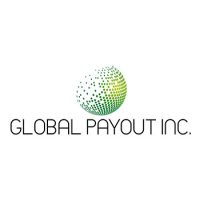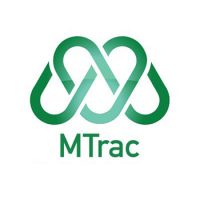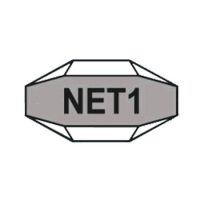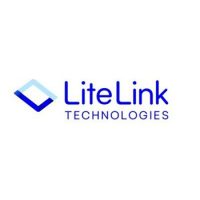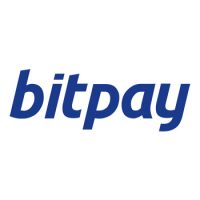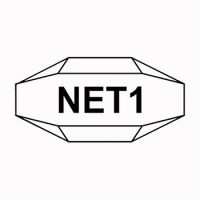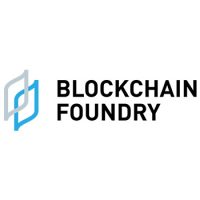Blockchain Press Releases
IDTechEx Discusses What the New EU Battery Regulation Means for Cell-To-Pack and Cell-To-Body

BOSTON, July 25, 2023 /PRNewswire/ — The sustainability, design, and recovery of electric vehicle (EV) batteries are set to be overhauled thanks to the approval of the EU’s new regulations governing the battery market. In June 2023, parliament approved new regulations that set out battery requirements, including a ‘Battery Passport’ and recovery of certain materials. In recent years, the EV market has been trending towards greater system integration, with technologies like cell-to-body and cell-to-chassis designs that can be harder to dismantle and/or remove from vehicles. Will this change with the adoption of these new regulations?
The new EU regulations cover the entire life cycle of a battery from the mined materials through to their recycling at end of life. To lessen the impact of initial manufacturing, there are requirements for more recycled content in the batteries but also targets for how much lithium (50% by 2027, 80% by 2031) and cobalt, copper, lead, and nickel (90% by 2027 and 95% by 2031) must be recovered from waste batteries. IDTechEx’s Li-ion Battery Recycling Market research has found that 23.8 million tonnes of Li-ion batteries will be recycled in 2043. Making the battery easy to remove from the vehicle and dismantle into parts could help recyclers in the long term.
Cell-to-pack batteries are designed such that a battery pack is no longer segmented into several modules. Instead, all of the cells are stacked directly together to reduce unnecessary materials and weight, improve energy density, simplify manufacturing, and reduce costs. According to IDTechEx research, the average cell-to-pack battery exhibits a 20% increase in its gravimetric cell-to-pack ratio (how much of the pack’s weight is taken up by the cells). Cell-to-body or cell-to-chassis takes this a step further, making the battery pack a structural component of the vehicles structure, again leading to greater integration and reducing the vehicle’s overall weight. The market has been trending in this direction, with manufacturers like BYD already deploying cell-to-pack systems in large numbers and cell-to-chassis designs becoming more common from the likes of Tesla with its 4680 pack.
Initially, one might expect a cell-to-pack design to be easier to dismantle to the cell level, given that there are less overall parts in the pack. However, cell-to-pack designs typically make much greater use of structural adhesives or encapsulating foams that can often make dismantling a pack very difficult, and the standard approach in the event of a fault would be to replace the battery pack entirely. If the adhesives or encapsulants used can be dissolved with a solvent without damaging the cells too much, then this could make recycling much simpler and be a viable differentiation point for material suppliers. With cell-to-chassis, removal of the pack from the vehicle can become a more arduous task, making a recycler’s job much more difficult.
Critically for battery designers, the EU regulations do not state anything about the internal structure of the battery pack (module structure, cell separators, adhesives, etc.). One method of recycling is to crush/grind the battery. This is then sieved to separate larger from smaller particles, with the latter containing the valuable electrode materials. The black mass is then further processed using hydrometallurgy to recover the lithium, cobalt, nickel, etc., in the form of battery-grade metal salts. Ideally, this process would start with just the cells so that the resulting black mass has a higher % of the critical metals. Some have placed entire modules into the grinder; one could also process an entire pack, in which case, the design of the battery means little at end of life, and the designer could take the short-term benefits of a lower cost and easier-to-manufacture battery pack. However, this will make the later stages of extraction more difficult.
In addition to recycling, there is also the opportunity for EV batteries to be used in second-life applications, for example, as stationary energy storage. IDTechEx’s report on second-life EV batteries has found that its market will reach US$7 billion by 2033. This bypasses the need in the short term to recycle a battery, and most second-life battery players are currently opting to integrate batteries at pack-level to avoid complex and timely disassembly to cell-level procedures. There would still be a requirement to remove the pack from the vehicle. If the pack forms a structural part of the vehicle, then this would increase disassembly times, making second-life repurposing a more expensive process. However, if a remanufacturer were to hypothetically disassemble to cell-level to make use of the best-performing cells in their second-life battery, a cell-to-pack design (which is not cell-to-chassis) could decrease disassembly times and reduce remanufacturing costs, at the benefit of a better performing second-life system.
In summary, it is unlikely that cell-to-pack designs are going away. If anything, the trend of greater vehicle integration will likely continue, thanks to the reduced manufacturing costs and higher energy density. EV battery packs are generally lasting longer than many initially expected, but in the future, once more EV packs start to hit end of life, the difficulty and effort of recycling large quantities of highly integrated battery packs may become apparent, and designers may have to consider this more carefully for the future, especially as the targets for recovery of critical materials become more stringent.
IDTechEx has investigated the impact of cell-to-pack/cell-to-chassis on various materials used in the battery, including fire protection materials and thermal interface materials. IDTechEx’s report, “Materials for Electric Vehicle Battery Cells and Packs 2023-2033“, covers the deployed and announced cell-to-pack and cell-to-body designs, along with how this will impact the intensity of various materials and components, including steel, aluminum, copper, composites, thermal interface materials, fire protection materials, electrical insulation, cold plates, and coolant hoses. The report also goes into depth on the materials used with the cells, such as lithium, cobalt, nickel, manganese, electrolyte, iron, phosphorous, binders, casings, carbon black, silicon, and separators. These materials are discussed with demand forecasts from 2023-2033.
About IDTechEx
IDTechEx guides your strategic business decisions through its Research, Subscription and Consultancy products, helping you profit from emerging technologies. For more information, contact [email protected] or visit www.IDTechEx.com.
Images download:
https://www.dropbox.com/scl/fo/jwxguiauc486qw9ek637w/h?rlkey=f05g1gkgn3xtf3x8v5b5aglor&dl=0
Media Contact:
Lucy Rogers
Sales and Marketing Administrator
[email protected]
+44(0)1223 812300
Social Media Links:
Twitter: www.twitter.com/IDTechEx
LinkedIn: www.linkedin.com/company/IDTechEx
Photo: https://mma.prnewswire.com/media/2159984/Cell_to_pack_batteries.jpg
Logo: https://mma.prnewswire.com/media/478371/IDTechEx_Logo.jpg
![]() View original content:https://www.prnewswire.co.uk/news-releases/idtechex-discusses-what-the-new-eu-battery-regulation-means-for-cell-to-pack-and-cell-to-body-301884045.html
View original content:https://www.prnewswire.co.uk/news-releases/idtechex-discusses-what-the-new-eu-battery-regulation-means-for-cell-to-pack-and-cell-to-body-301884045.html

Blockchain
Blocks & Headlines: Today in Blockchain – May 12, 2025 | Rootstock, Zimbabwe Carbon Registry, Fastex, 21Shares, The Blockchain Group

Welcome to Blocks & Headlines, your daily op-ed style deep dive into the most pivotal blockchain and crypto stories shaping today’s market. In this edition—May 12, 2025—we cover:
-
Bitcoin DeFi Security Strengthens as Rootstock garners 81% of Bitcoin’s hashrate
-
Zimbabwe’s Blockchain Carbon Credit Registry aims to restore investor trust
-
Token2049 Dubai Highlights spotlight Fastex’s Web3 innovations
-
21Shares’ New ETP for Cronos (CRO) bridges traditional finance and DeFi
-
The Blockchain Group’s €9.9 M Capital Raise fuels its Bitcoin treasury strategy
Below, each story is summarized with key takeaways and opinion-driven context.
Introduction
Today’s blockchain landscape is defined by two contrasting forces: institutional maturation—as legacy players and governments adopt tokenized assets and infrastructure—and startup-driven innovation—where Web3 pioneers push boundaries in DeFi, NFTs, and on-chain governance. Major trends include:
-
Security & Scalability: Layer-2 solutions and cross-chain bridges are gaining traction to secure and scale Bitcoin and Ethereum ecosystems.
-
Transparency & Trust: From carbon credits to capital markets, blockchain is repeatedly chosen to enhance auditability and investor confidence.
-
Mainstream Access: Crypto ETPs and regulated token offerings are lowering barriers for retail and institutional investors.
-
Treasury Management: Public companies are increasingly using Bitcoin and token holdings as strategic assets to hedge against macro volatility.
Let’s unpack today’s five developments and their broader implications.
1. Bitcoin DeFi Security Strengthens with Rootstock’s Hashrate Share
What happened: A new Messari report finds that Rootstock (RSK), Bitcoin’s oldest layer-2 smart-contract platform, now commands 81% of Bitcoin’s total hashrate, up from 56% before major mining pools Foundry and SpiderPool onboarded in February. Transactions on Rootstock are 95% cheaper than on-chain Bitcoin and 55% cheaper than Ethereum, positioning RSK for sustained DeFi growth in 2025.
Source: CoinDesk
Analysis & commentary:
Rootstock’s dominant hashrate share underscores two key shifts:
-
Security by Convergence: By leveraging Bitcoin’s massive mining network, RSK mitigates the common 51% risk faced by smaller chains.
-
Cost-Efficiency for DeFi: Lower fees make RSK an attractive alternative to Ethereum for yield protocols, lending markets, and decentralized exchanges.
However, challenges remain. Smart-contract developers must integrate robust cross-chain bridges—Rootstock’s partnership with LayerZero is a start—to attract liquidity. Moreover, regulatory scrutiny of DeFi is rising; RSK’s governance will need transparent on-chain dispute resolution and compliance tooling to win institutional adoption.
2. Zimbabwe’s Blockchain Carbon Credit Registry to Revive Investor Confidence
What happened: In Harare on May 9, the Zimbabwean government launched the world’s first blockchain-enabled carbon credit registry, developed by Dubai’s A6 Labs. The immutable ledger will record issuance, trading, and retirement of credits, addressing the fallout from 2023’s abrupt project cancellations and a 50% revenue levy that spooked developers. The new Zimbabwe Carbon Markets Authority (ZCMA) will oversee licensing via the zicma.org.zw portal.
Source: Bloomberg
Analysis & commentary:
Zimbabwe’s registry is an instructive case study in how blockchain can restore transparency and rebuild market trust:
-
Immutable Audits: Every credit’s provenance is verifiable on-chain, deterring double-counting and fraud.
-
Regulatory Framework: A dedicated authority streamlines approvals, balancing market access with environmental integrity.
-
Investor Reassurance: By codifying rules in smart contracts, Zimbabwe signals that future policy shifts will be governed by code, not sudden ministerial edict.
Nonetheless, blockchain is not a panacea. Effective enforcement still depends on reliable on-the-ground measurement and reporting. The real test will be whether smaller African producers—Kenya, Zambia—adopt interoperable registries, creating a pan-continental carbon marketplace.
3. Web3 Innovation Takes Center Stage at Token2049 Dubai
What happened: Between April 30 and May 1, Token2049 Dubai convened industry leaders in the Emirates. Fastex, a platinum sponsor, showcased its Bahamut blockchain (PoSA consensus), the YoWallet custodial solution, and a wave of new apps—YoHealth, YoPhone/YoSIM, YoBlog—all designed to expand Web3 use cases beyond finance. Fastex also co-hosted regulatory forums with Solidus Labs and launched the Bahamut Grants program to seed developer innovation.
Source: Cointelegraph
Analysis & commentary:
Token2049’s Dubai edition highlights an ecosystem maturation where:
-
Compliance & Growth Coexist: Legal breakfasts signaled that self-regulation and layered oversight can lower entry barriers without stifling ingenuity.
-
Beyond Finance: By unveiling telecom and health apps, Fastex challenges the notion that blockchain is niche—real-world use cases can drive mainstream adoption.
-
Brand Ambassadors: Football legend Patrice Evra’s presence at YoHealth’s booth illustrates how cultural icons can amplify blockchain’s reach.
Moving forward, projects must demonstrate measurable end-user utility and scalable infrastructure to avoid the “pilot-only” trap. Dubai’s supportive regulatory sandbox remains an ideal proving ground.
4. 21Shares Launches ETP for Cronos (CRO) – Bridging TradFi and DeFi
What happened: Swiss issuer 21Shares listed a new ETP (CRON) on May 12, offering direct exposure to CRO, the native token of Cronos—a Layer 1 chain built for DeFi, NFTs, and cross-chain interoperability with Ethereum and Cosmos. Investors can now trade CRO through regular brokerages without managing private keys or wallets.
Source: The Paypers
Analysis & commentary:
Tokenizing blockchain assets into regulated ETPs remains one of the most powerful drivers of institutional capital inflows:
-
Familiar Interfaces: By packaging CRO as a ticker, 21Shares lowers the learning curve for asset managers and pension funds.
-
Regulatory Alignment: ETPs fall under securities law, offering clear governance compared to unregulated spot tokens.
-
Ecosystem Growth: Cronos stands to benefit from increased liquidity and brand recognition, which in turn fuels DeFi activity on its network.
ETPs also invite scrutiny: fees, redemption mechanics, and underlying custodial risks must be transparent to preserve investor trust. As competition heats up—with products for BTC, ETH, SOL, and more—issuers will vie on pricing, ease of access, and institutional credibility.
5. The Blockchain Group’s €9.9 M Capital Raise Advances Bitcoin Treasury Strategy
What happened: Europe’s first Bitcoin Treasury Company, The Blockchain Group (ALTBG), completed a €9.888 million capital increase at €1.0932 per share on May 7, 2025. Proceeds will bolster its strategy to accumulate Bitcoin per fully diluted share while expanding consulting and AI-driven blockchain services.
Source: ActusNews via MarketScreener
Analysis & commentary:
The Blockchain Group’s financing round underscores a new corporate paradigm where holding BTC is core to the business model:
-
Shareholder Alignment: By tethering equity value to Bitcoin accumulation, management and investors share upside in crypto markets.
-
Operational Synergies: Subsidiaries in data intelligence and decentralized consulting can monetize both service fees and on-balance-sheet Bitcoin appreciation.
-
Regulatory Compliance: As a publicly listed entity on Euronext Growth Paris, ALTBG navigates EU financial rules, offering a transparent vehicle for crypto exposure.
Yet this approach carries volatility risk: sudden BTC price swings can compress earnings per share and spur shareholder activism. Mitigation strategies—such as hedged derivatives and staggered BTC purchases—will be critical to sustain growth without alarming investors.
Conclusion
Today’s highlights reveal a blockchain industry at once foundational and frontier:
-
Security & Scale: Rootstock’s hashrate gains fortify Bitcoin DeFi’s underpinnings.
-
Transparent Markets: Zimbabwe’s carbon registry sets a template for blockchain-backed commodity markets.
-
Web3 Diversification: Token2049 Dubai shows that true mass adoption demands real-world applications in health, telecom, and beyond.
-
Institutional Access: ETPs like CRON democratize token ownership for mainstream investors.
-
On-Balance-Sheet Crypto: The Blockchain Group exemplifies the rising class of publicly traded crypto-native firms.
As blockchain extends into supply chains, tokenized securities, and identity, the winners will be those who blend innovative protocol design with pragmatic regulatory alignment. Keep tuning into Blocks & Headlines for tomorrow’s top stories.
The post Blocks & Headlines: Today in Blockchain – May 12, 2025 | Rootstock, Zimbabwe Carbon Registry, Fastex, 21Shares, The Blockchain Group appeared first on News, Events, Advertising Options.
Blockchain Press Releases
Input | Output Partners with Brave to Integrate Cardano into Brave Wallet

Once live, the Input | Output (IO) led integration will bring full Cardano support to Brave Wallet, including Cardano native assets, as well as send, receive, swap, and signing capabilities- all natively embedded within Brave’s best-in-class browser wallet. This establishes Brave as a key partner to the Cardano community in the age of Voltaire.
SAN FRANCISCO and LONDON, May 12, 2025 /PRNewswire/ — Input | Output (IO), the preeminent Web3 blockchain infrastructure and engineering firm, today announced a strategic partnership with Brave Software, the creator of the leading privacy-first browser and integrated multi-chain Brave Wallet. Together, they will integrate Cardano into the Brave Wallet, enabling Cardano blockchain access and token management from within the Brave wallet.
“Our partnership with IO reflects Brave’s commitment to building a Web3 that maximizes interoperation for user choice, while giving them better tools to engage with decentralized ecosystems,” said Brendan Eich, CEO and co-founder of Brave and the Basic Attention Token (BAT). “Integrating Cardano into Brave Wallet not only expands multi-chain access, but also enhances security, governance participation, and the overall user experience.”
Through this integration, Brave users and the broader Cardano community will gain direct access to Cardano’s blockchain for activities such as governance participation and native asset management, all within the privacy-focused Brave Wallet. Additionally, Brave Wallet will support the execution of swaps with Cardano native tokens and other on-chain transactions. This major milestone enhances Brave’s multi-chain capabilities, adding to its existing support for networks like Ethereum and Solana. Cardano users will now be able to manage native assets like NIGHT, engage in governance, and seamlessly swap tokens—securely and privately—through Brave’s in-browser wallet.
“This collaboration with Brave is a natural fit,” said Charles Hoskinson, CEO of IO. “We share a vision for a more secure, accessible, and user-respecting Web3. By bringing Cardano into Brave Wallet, we are not only expanding functionality for Cardano users in the age of on-chain governance, but also advancing a new standard for how blockchain networks should empower individuals—protecting privacy while enabling active, on-chain participation.”
The partnership also sets the stage for future innovation around engagement with Cardano’s governance and Midnight, a blockchain developed by Shielded Technologies, an Input | Output spinout focused on confidential smart contracts and data protection.
Media Contacts:
Georgia Hanias
Input | Output (IO)
[email protected]
Catherine Corre
Brave Software
[email protected]
About Input | Output (IO)
Input |Output (IO) is a world-leading blockchain infrastructure and research engineering firm dedicated to building a sustainable Web3 ecosystem. IO is committed to advancing the next generation of blockchain innovation, focusing on scalability, security, and real-world adoption through pioneering research and cutting-edge engineering.
About Brave Wallet and Brave
Brave Wallet is the secure, multi-chain crypto wallet built directly into the Brave privacy browser—no extensions required. With Brave Wallet, users can manage tokens and NFTs; connect to DApps and onramp to Web3; and explore decentralized finance, social media, gaming, and more. Brave Wallet users can connect other “cold” wallets like Ledger & Trezor. They can buy, store, send, and connect to DApps on Solana, Ethereum and EVM chains, Zcash, and Filecoin.
Brave Wallet is available on desktop, Android, and iOS, and is free to use. To get started on desktop, Brave browser users can click the wallet icon near the address bar. On mobile, users can tap “⋮” (Android) or “…” (iOS), then tap the wallet icon.
Brave is a driving force leading the way for Web3 adoption, directly supporting Web3 into the broader Web through its privacy browser, independent search engine, and browser-native, multi-chain crypto wallet. Brave currently has over 85 million monthly active users. Learn more at brave.com.

Photo – https://mma.prnewswire.com/media/2683708/Charles_Hoskinson_Profile.jpg
Logo – https://mma.prnewswire.com/media/2683709/IO_Logo.jpg
![]() View original content:https://www.prnewswire.co.uk/news-releases/input–output-partners-with-brave-to-integrate-cardano-into-brave-wallet-302451409.html
View original content:https://www.prnewswire.co.uk/news-releases/input–output-partners-with-brave-to-integrate-cardano-into-brave-wallet-302451409.html

Blockchain Press Releases
Bybit Introduces BOB to P2P: Bolivian Traders Can Now Buy, Sell in Local Currency and Earn Commissions

DUBAI, UAE, May 12, 2025 /PRNewswire/ — Bybit, the world’s second-largest cryptocurrency exchange by trading volume, has expanded its peer-to-peer (P2P) platform to support the Bolivian Bolíviano (BOB), enabling users in Bolivia to buy and sell crypto with their national currency for the first time on the platform.
In addition to enhancing local access to digital assets, Bybit is launching a new merchant program that invites users to list BOB trading ads and earn generous bi-weekly commissions. High-performing merchants can earn up to 400 USDT every two weeks, with added incentives for those listing in multiple fiat currencies.
“Expanding our P2P platform to include BOB is a reflection of our dedication to financial inclusion and local empowerment,” said Mazurka Zeng, Head of Fiat at Bybit. “We’re proud to offer Bolivian users more ways to access crypto markets while also opening the door to new opportunities”.
Bybit P2P merchants receive tailored support, including 1-to-1 customer service and faster appeal resolutions. To qualify for rewards, merchants must maintain active listings for a specified number of hours each week and meet trading volume and order count targets. Performance is reviewed every two weeks, and rewards are distributed through the Rewards Hub.
This launch represents another step in Bybit’s ongoing commitment to bring crypto access and earning potential to communities around the world through localized, user-friendly P2P services.
Bybit is actively expanding in the LATAM market and has seen a consistent rise in user requests from Bolivia to support the Boliviano (BOB) on its P2P platform. As crypto adoption continues to grow across the region, adding BOB would enhance accessibility for local users and empower them to engage more easily with the digital asset economy.
#Bybit / #TheCryptoArk
About Bybit
Bybit is the world’s second-largest cryptocurrency exchange by trading volume, serving a global community of over 70 million users. Founded in 2018, Bybit is redefining openness in the decentralized world by creating a simpler, open and equal ecosystem for everyone. With a strong focus on Web3, Bybit partners strategically with leading blockchain protocols to provide robust infrastructure and drive on-chain innovation. Renowned for its secure custody, diverse marketplaces, intuitive user experience, and advanced blockchain tools, Bybit bridges the gap between TradFi and DeFi, empowering builders, creators, and enthusiasts to unlock the full potential of Web3. Discover the future of decentralized finance at Bybit.com.
For more details about Bybit, please visit Bybit Press
For media inquiries, please contact: [email protected]
For updates, please follow: Bybit’s Communities and Social Media
Discord | Facebook | Instagram | LinkedIn | Reddit | Telegram | TikTok | X | Youtube

Photo – https://mma.prnewswire.com/media/2684795/Bybit_Brings_BOB_P2P___Bolivian_Traders_Can_Now_Buy.jpg
Logo – https://mma.prnewswire.com/media/2267288/Logo.jpg
![]() View original content:https://www.prnewswire.co.uk/news-releases/bybit-introduces-bob-to-p2p-bolivian-traders-can-now-buy-sell-in-local-currency-and-earn-commissions-302452489.html
View original content:https://www.prnewswire.co.uk/news-releases/bybit-introduces-bob-to-p2p-bolivian-traders-can-now-buy-sell-in-local-currency-and-earn-commissions-302452489.html

-

 Blockchain Press Releases6 days ago
Blockchain Press Releases6 days agoHTX Premieres USD1 Stablecoin Globally, Partnering with World Liberty Financial to Forge a New Era of Decentralized Economy
-
Blockchain5 days ago
Colb Asset SA Raises $7.3 Million in Oversubscribed Round to Bring Pre-IPO Giants to Blockchain
-

 Blockchain Press Releases5 days ago
Blockchain Press Releases5 days agoHTX and Justin Sun Launch $6M Mars Program Special Edition, Offering One User a Historic Space Journey
-

 Blockchain4 days ago
Blockchain4 days agoBitget Blockchain4Youth sostiene l’innovazione del Web3 e dell’IA all’hackathon “Build with AI” di Google Developer Group
-

 Blockchain4 days ago
Blockchain4 days agoBlocks & Headlines: Today in Blockchain – May 9, 2025 | Robinhood, Solana, Tether, China, Women in Web3
-

 Blockchain5 days ago
Blockchain5 days agoBlocks & Headlines: Today in Blockchain – May 7, 2025 | Coinbase, Riot Games, Curve DAO, Litecoin, AR.IO
-

 Blockchain Press Releases4 days ago
Blockchain Press Releases4 days agoBybit Surpasses 70 Million Users, Reinforces Commitment to Transparency and Institutional Growth
-

 Blockchain Press Releases6 days ago
Blockchain Press Releases6 days agoJuCoin made a global impact at TOKEN2049 Dubai, advancing its ecosystem with the “Peak Experience” vision and JuChain’s robust tech.






